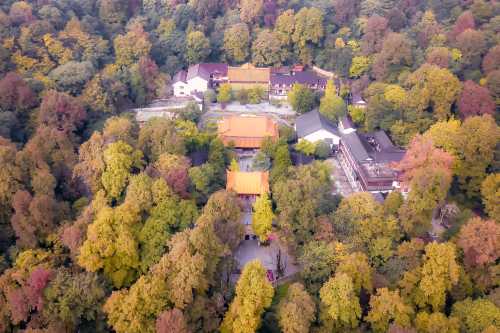App
Customer Support
Find Bookings
Popular Trip Moments
Budget Travel Guide for June-July: Unstoppable with These Tips | Changsha Travel! IFS → Hidden Alley Secrets Ultimate Guide! | Changsha Xingsha Photo Guide: These 3 Spots Are Perfect for Photos! | 4 Budget-Friendly Cities Accessible by High-Speed Rail | Welcome to Hunan! | Changsha Beautiful Hotel | A Day in a Suzhou Garden | 2025 Budget Travel Gems! 9 Cities to Explore the World Affordably | Monthly salary of 3k can still have a blast! The ultimate budget travel list for solo girls or bestie trips | Recommended Hotel for Changsha Travel | Stay here when you visit Changsha! | ##Staying in a Cloud Terrace with My Bestie in Changsha, Sipping the City's Fireworks## | Totally obsessed with this family-friendly hotel! A must-see for parents | Must-Stay in Changsha! Bookmark This Divine Hotel in Yuelu District Now! | New Gaming Hotel Experience, Absolutely Thrilling! | A must-see in Changsha! A millennium-crossing dream on the Xiang River… | Only by touching the clay of Tongguan Kiln can you understand the warmth of handmade craftsmanship | Hua Yi Brothers Movie Town | A Stunning European-Style Photo Spot | I found the most romantic spot in Changsha! The breathtaking sunset at Wanjiali | Come to Changsha for a trip, avoid the crowds on Huangxing South Road, and follow me—— | Poolside Hotel | Perfect for Summer #Top Recommendations# Major Cities | Changsha, here I come!!! | 【Changsha 3-Day 2-Night Ultimate Guide】Explore the Viral Star City! Follow this guide to indulge in delicious treats | "Every bite in Changsha tells a story! Stinky tofu, sugar-oil baba... so delicious!" | Beauty is easy to create; it just lacks the eyes to discover it | Hunan Changsha | Changsha Treasure Hotel | Yishang Hotel Wuyue Plaza Branch, once you stay, you won't want to leave | Beijing Weekend Getaway with Kids: 4 Short Trip Destinations to Explore with Your Little Ones | I encountered the most heartwarming hotel in Changsha—Huanman Hotel | Back in Changsha... I'm really overwhelmed……
Recommended Attractions at Popular Destinations
Attraction near Bangkok | Attraction near Manila | Attraction near Tokyo | Attraction near Taipei | Attraction near Hong Kong | Attraction near Seoul | Attraction near Kuala Lumpur | Attraction near Los Angeles | Attraction near Shanghai | Attraction near New York | Attraction near Shenzhen | Attraction near Osaka | Attraction near Singapore | Attraction near London | Attraction near Guangzhou | Attraction near San Francisco | Attraction near Beijing | Attraction near Macau | Attraction near Bali | Attraction near Jakarta | Attraction near Paris | Attraction near Ho Chi Minh City | Attraction near Istanbul | Attraction near Phuket | Attraction near Chicago | Attraction near Seattle | Attraction near Toronto | Attraction near Orlando | Attraction near Cebu | Attraction near Chiang Mai
Popular Restaurants in Changsha
Xiangjiang 36 | Yan Ting | NICCOLO KITCHEN | WENHEYOU | Everlasting Happiness | 长沙君悦酒店·自助餐厅咖啡厅 | 长沙北辰国荟酒店·国荟39 | 长沙雅致酒店·珺丽Another Life餐吧 | 长沙君悦酒店大堂酒廊 | XIANG SHOW HUNAN RESTAURANT | 长沙北辰国荟酒店·北辰里中餐厅 | 长沙建鸿达JW万豪酒店·中餐厅·皓羽轩 | Social | W CHANGSHA· TROPICS All Day Dining | Chef Fei | TIANBAO BROTHERS | 长沙瑞吉酒店·日餐厅云 Un | 盟重烧烤(高正街店) | Lu Xiang Xiao Zhen | YI ZHAN DENG | THE ST.REGIS BAR | TAN ZONG DUO JIAO YU TOU | WUHOUDETANG RESTAURANT | Café Royale | 墨茉点心局(国金街店) | Yu lou dong (xiang fu lu qi jian dian) | 牛家酒场(7mall店) | The Peach Garden | The Field | Hidilao Hot Pot( Yu Hua Ting CapitaLand Square )
Popular Ranked Lists
Popular Best Things to Do in Huainan | Top 3 Luxury Hotels in Kavrepalanchok | Popular Luxury Hotels Near Fort William | Popular Must-Visit Restaurants in Milan | Popular Must-Visit Restaurants in Hong Kong | Top 3 Best Things to Do in Panzhihua | Popular Must-Visit Restaurants in Chaozhou | Popular Luxury Hotels Near Varberg | Top 3 Best Things to Do in Zhoukou | Popular Luxury Hotels Near Jezerce | Top 3 Best Things to Do in Fuding | Popular Must-Visit Restaurants in Dubai | Popular Must-Visit Restaurants in Taipei | Popular Luxury Hotels Near Tatsugo | Top 5 Best Things to Do in Huaihua | Popular Luxury Hotels in Koyaki | Popular Must-Visit Restaurants in Barcelona | Top 3 Luxury Hotels in Dhaka | Popular Premium Hotels Near Kinshasa | Top 4 Best Things to Do in Yingkou | Top 5 Best Things to Do in Songpan | Popular Must-Visit Restaurants in Madrid | Popular Luxury Hotels Near Naxos | Popular Must-Visit Restaurants in Bruges | Popular Must-Visit Restaurants in Jeju | Top 10 Must-Visit Restaurants in Bad Ischl | Popular Luxury Hotels Near Province of Palermo | Popular Must-Visit Restaurants in Shanghai | Popular Luxury Hotels in Mirbat | Popular Luxury Hotels Near Silivri
Payment Methods
Our Partners
Copyright © 2025 Trip.com Travel Singapore Pte. Ltd. All rights reserved
Site Operator: Trip.com Travel Singapore Pte. Ltd.
Site Operator: Trip.com Travel Singapore Pte. Ltd.














